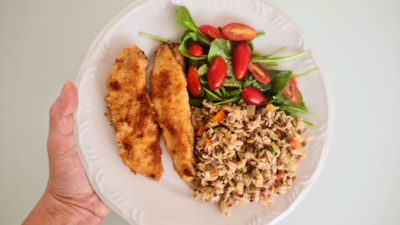
How to dress your plate right
A healthy lifestyle starts with bringing diversity to our plates. Considering today’s environment, every meal should be an opportunity to nourish our body with all the required nutrients, i.e., carbs, proteins, healthy fats, vitamins, and minerals. Each food group provides unique health benefits that provide us energy, build our muscles, help us fight infections, and keep us healthy. Including a variety of foods in your meal adds vibrant colors and flavors and fulfills nutritional value.
Why do we need a balanced plate with diverse foods?
To diversify your plate, focus on balancing by combining different food groups and flavors. Each meal may be made more palatable and healthy by including a range of foods to improve flavors and nutritional profiles.
A healthy plate sets the stage for proper nutrition as it gives the body accurate nutrition intake, which is needed to produce energy and keep one’s physical well-being in check. By dressing your plate with a variety of foods, you can fuel your body with its nutrient-dense essentials for maintaining your health. A balanced diet includes several groups of foods to make sure all of the boxes of dietary requirements are checked.
Choose your grains wisely
According to Dr. Meghana Pasi, Head, MyThali, “In order to add diversity to our meals, one should have a mix of whole grains and legumes, along with lean protein, dairy, and plenty of colorful fruits and vegetables. Create a balanced meal by including a base of whole grains such as quinoa, millet, barley, farro, or brown rice. Complex carbohydrates and fiber from whole grains, such as quinoa, brown rice, or whole-wheat pasta, aid with digestion and maintain feelings of fullness.”
Pick only seasonal and local produce
Try to include local, seasonal, and fresh foods in your diet to improve the nutritional quality. Add a mix of vegetables such as leafy greens like spinach, root vegetables like beetroot, carrot, or sweet potatoes, and cruciferous vegetables like broccoli or Brussels sprouts, as they provide a range of vitamins, minerals, and antioxidants.

According to Dr. Preeti Nagar, Dietician at NIIMS Medical College & Hospital, “Begin with a foundation of vibrant veggies, such as bell peppers or tomatoes, yellows from carrots or squash, and greens like spinach and kale. A rainbow of veggies is the best way to cover a variety of nutrients because each color corresponds to a particular antioxidant and vitamin.”
From whole grains, lean proteins, and healthy fats to an added layer of color using a rainbow of vegetables, starting from leafy greens to vibrant peppers, carrots, and berries, each provides unique health benefits.
Protein is the building block
According to Varsha Sharma, dietician, Sharda Hospital, “Lastly, one-quarter of your plate should be occupied by protein, which is essential for tissue growth and repair. Use whole grains on one-quarter of your plate, which provide long-lasting energy. This method guarantees that your body gets the variety of nutrients it needs to support immune system health, vitality, mood stability, and cognitive performance.”

Think about protein-rich foods like eggs, beans, lentils, chickpeas, and tofu instead of only meat. Additionally, lean proteins like turkey, fish, and chicken are great options. Integrate protein sources such as beans or soya. Non-vegetarians can rotate between plant protein and animal protein. It includes fermented food like kimchi, kefir, kombucha, or yogurt to get the probiotics, as they improve gut health by maintaining healthy intestinal flora and increasing the absorption of nutrients.
Healthy fats are your friend
For taste and fullness on your plate, include healthy fats; omega-3s and other important fatty acids are found in foods like avocados, olive oil, nuts, and seeds.
Add spices to the diet for added nutrition
According to Dr. Bhavna Garg, senior consultant, Dietitian and Nutritionist, Yashoda Super Speciality Hospital Kaushambi, “Fresh herbs and spices, such as rosemary for its antioxidants or turmeric for its anti-inflammatory qualities, not only improve flavor but also offer other health advantages. Your dish becomes a varied blend of flavors, textures, and nutrition when these components are carefully combined.
Experiment with herbs and spices to maximize the taste and flavors in your dishes. Our aim is to inspire everyone to foster a lifestyle that prioritizes variety along with quality, help people follow a balanced diet, and make healthier food choices along with embracing seasonal produce. The goal is to make the meal not just visually appealing but also nourishing.
Importance of meal planning
A diversified plate ensures the absorption of numerous vitamins, minerals, antioxidants, and healthy fats that can significantly contribute to energy, strengthen the immune system, and prevent chronic diseases.
Here’s how you can turn your winter veggies into yummy and healthy pickles!
